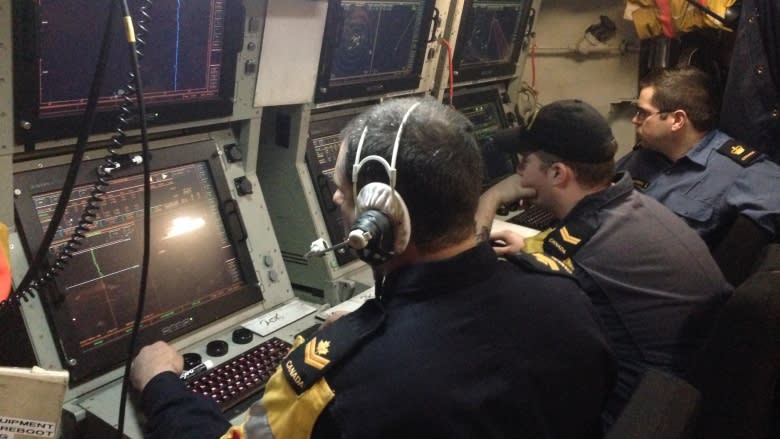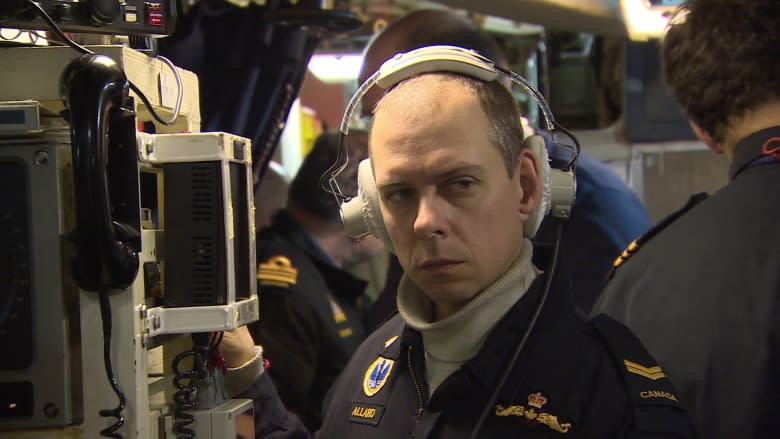Canadian submarine 'milestone' disparaged by critic
A longtime critic of Canada's submarine program is raising questions about a development the navy considers to be a "milestone."
For the first time since Canada's four Victoria-class subs were purchased almost 20 years ago, the navy says the fleet is now "operational." That means three of the subs are finally able to conduct naval operations. But only one of the subs, HMCS Victoria, can currently fire a torpedo.
"They are reaching for the glimmers of hope and they've found a couple, and I don't want to deny them that," says Michael Byers, a UBC political science professor and a Canada Research Chair in Global Politics and International Law.
"But we also have to take this with a large grain of salt. This is not a huge accomplishment, this is simply the first good news the navy has had for a number of years."
Byers says the operational subs are a mark of success for the navy, especially in terms of becoming more useful to the U.S. in training exercises. But he says there are some serious questions that still aren't answered. "One of them is obviously how operational are they really? Is this just symbolic or can they actually engage in combat if necessary?"
Take a peek inside HMCS Victoria with a 360º photo at bubb.li
Subs faced crippling setbacks
Jean Chrétien's Liberal government first announced the purchase of the four diesel-electric submarines in 1998. They were bought second-hand from Britain's Royal Navy for $896 million in what was heralded at the time as a great bargain for taxpayers.
But their cost and associated refits have stirred controversy ever since. Byers estimates they've cost at least twice that much to fix, maintain and update to modern standards. In 2008, Canada's Treasury Board approved a maximum of $1.5 billion to support and service the four subs.
The sub program has also suffered a series of troubling accidents over the past two decades that nearly scuttled the program, including a deadly fire on HMCS Chicoutimi in 2004 near Ireland, and a 2012 incident off Vancouver Island, where HMCS Corner Brook hit the ocean floor.
But navy officials are keen to put that is all behind them and they're calling the operational fleet a critical step forward. This week, the navy invited a few members of the media to tour HMCS Victoria, considered Canada's lone "high-readiness" submarine.
The crew took the ship through dives and turns up to 60 metres under the Juan de Fuca Strait, and simulated the firing of a torpedo in front of TV cameras and radio and newspaper reporters. The sub has been able to fire the weapon for the past three years and has taken part in some of the world's biggest military exercises off Hawaii.
"It has been a long road to get these submarines operational," says HMCS Victoria Commander Alex Kooiman.
"It means that I can do anything that I'm asked to do. We're trained at a level that allows me to conduct any mission that Canada has for her submarine force... It took a while to get there, but we're now there."
Uncertain future for program
The commander of Canada's submarine force says the life expectancy of the subs is the mid-to-late 2020s, with the possibility of an extension for up to another 10 years. "That effort is just starting now," says Capt. James Clarke, "But it requires significant technical study to make sure the submarines can be extended."
Clarke says Canada's submarines can now influence foreign governments with what they are capable of doing. "Whether you're at a time of war, a time of tension, or a time of peace, having that capability and that tool for the government to use as one of its tools of diplomacy is very important."
But Michael Byers says the newly operating fleet of subs shouldn't detract from an important debate: Should Canada even have a sub program in the future? He says the government and navy will be focusing on the recent success, but neither wants to talk about a need for replacements in a decade or so.
"The navy is trying to avoid losing a submarine capability by default, by incompetence, by a lack of planning," Byers says.
"I think now is the time to have a serious conversation in this country as to whether or not we want to decide to replace these submarines in 10 or 12 years time. That will cost a fair bit of money, probably in the range of five, six or seven billion dollars… If Canada is going to have a serious submarine capability into the rest of the century, the government is going to have to pony up some serious dough."
For now, two of Canada's subs, HMCS Victoria and HMCS Chicoutimi will be in the water off Esquimalt, B.C., this week, while HMCS Windsor is currently operating out of Halifax. A fourth vessel, HMCS Corner Brook, is in dry dock in Esquimalt in what the navy calls a scheduled period of "deep maintenance."



